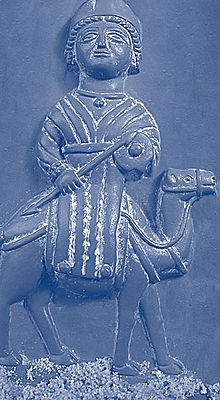لات
ڏيک

لات، دور جاھليت ۾ اھل عرب جي ھڪ بت جو نالو آھي جيڪو مربع شڪل جو ھيو ۽ اڇي پٿر جو ٺھيل ھيو ۽ ان کي اھل عرب خدائي درجو ڏيندا ھئا۔ ان بت جي عبادت ڪندا ھئا۔ ان بت جي عبادت وڏي عرصي تائين ٿيندي رھي۔ طائف ۾ ھي بت رکيل آھي۔
حوالو
[سنواريو]- ڪتاب: مڪمل اسلامي انسائيڪلوپيڊيا، مصنف:مرحوم سيد قاسم محمود، ص- 1296
